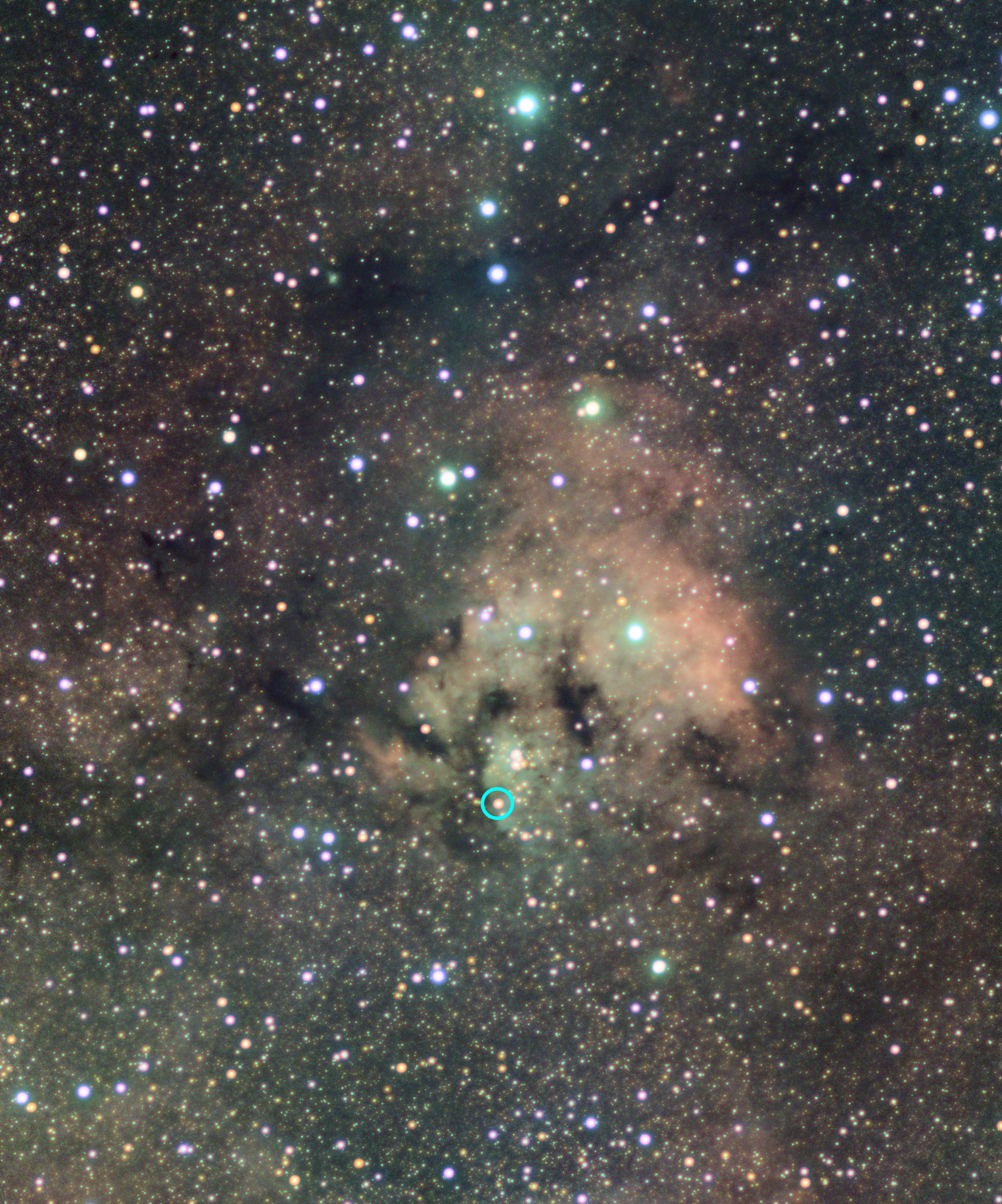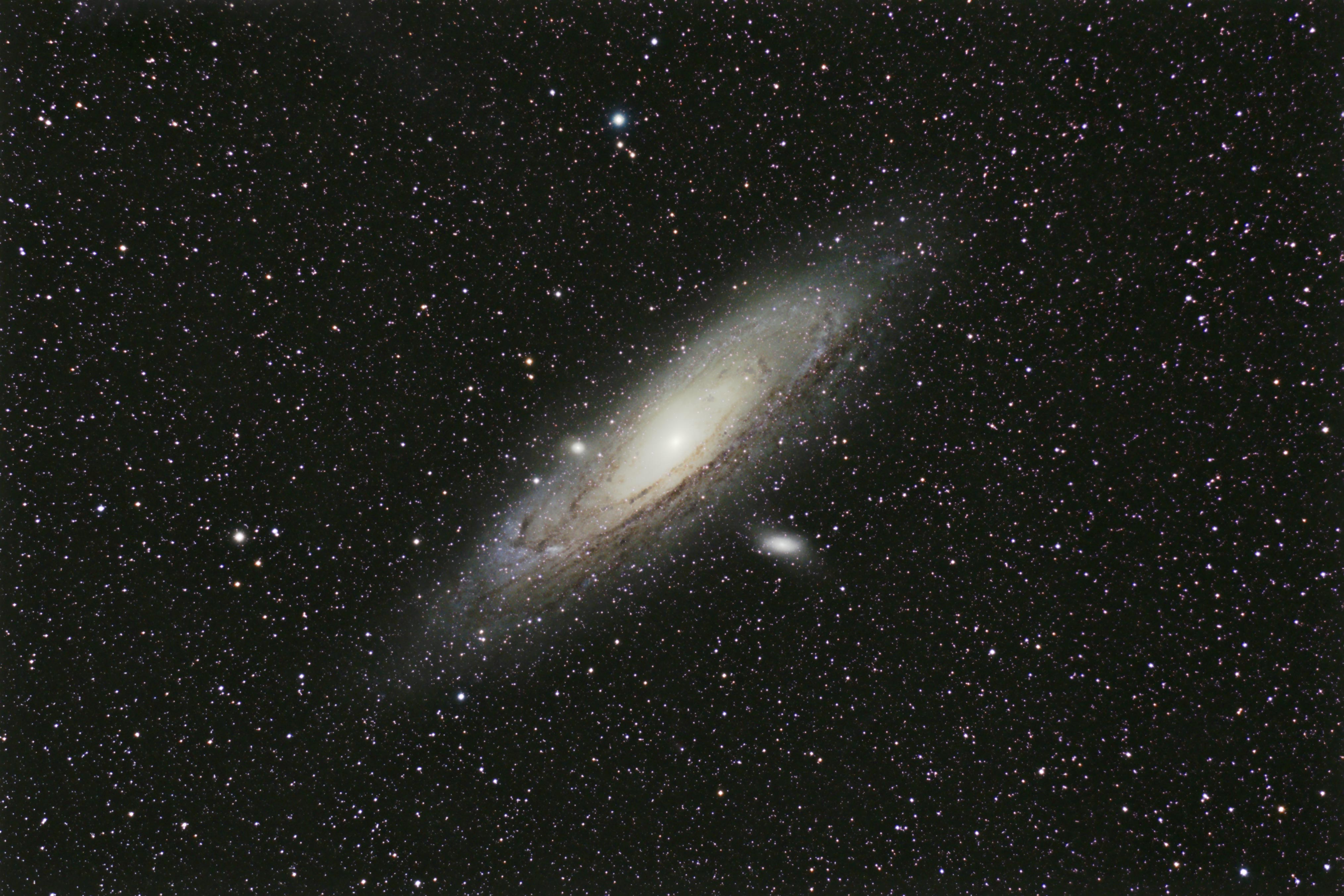
Astronomy.se
Astrophotography by Jan Sonnvik
Welcome to view some of my astro photography work! I'm based in southern Sweden and most of the images shown here are taken from my home observatory under moderately light polluted skies. My equipment includes a Celestron 11 scope mounted on a Mesu German Equatorial mount and I mostly use a QSI 583 wsg CCD camera mounted in C11 Cassegrain focus as well as an ASI 294 MC Pro CMOS camera mounted piggyback with an old Pentax medium format 6x7 400mm f4 SMC Takumar camera lens made in the 1980's. I have rigged the lens with an auto focus motor solution which is controlled by Voyager astrophotography automation software, which also controls the rest of the setup.
QSI 583 CCD
NGC2775 area
With NGC2777 and other galaxies
NGC 2775 is a spiral galaxy in the constellation Cancer discovered by William Herschel in 1783. It is located about 67 million light-years away from the Milky Way. NGC 2775 belongs to the Antlia-Hydra Cluster of galaxies and is the most prominent member of the group. Other members of the NGC 2775 Group include NGC 2777 (seen at lower left in the image) and UGC 4781.
The image is an LRGB composite of 13 individual 300 sec exposures in luminance and 13 each in R, G and B for 150 seconds. Processing mostly in PixInsight and some in Photoshop. The color data was binned 3x3 in the camera and scaled up during processing to match the luminance. All images were also 2x drizzle interpolated during processing, i.e. to 2x the original resolution. . More data (exposure time) would be needed to fully capture the halo and details in NGC2775.
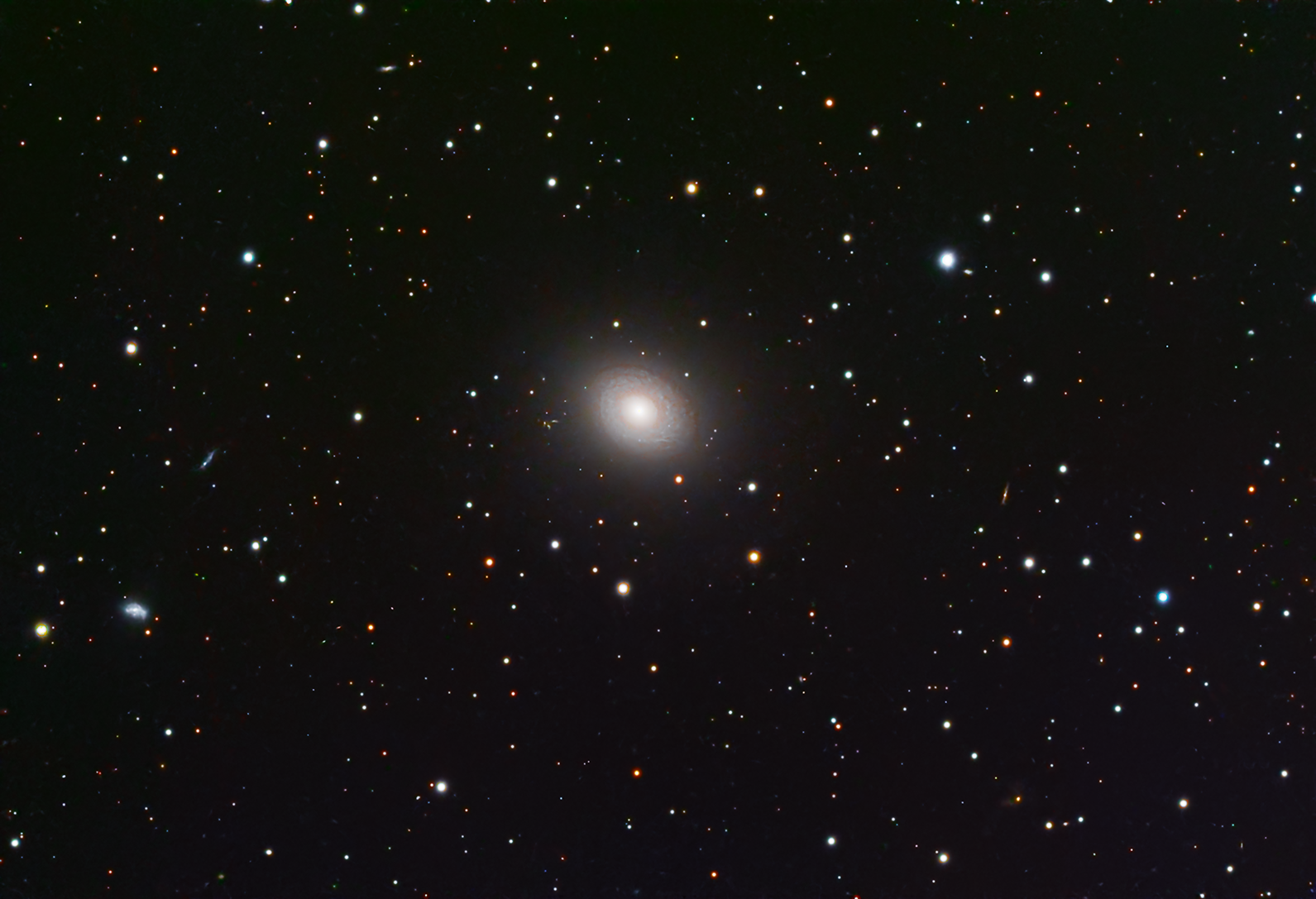
Canon 70D
Cederblad 214
NGC 7822 complex
I targeted the same area as the image down below back in 2018 but without color data. I used a converted Canon 70D camera with a 200 mm lens. Recently I re-processed the data in PixInsight to bring out additional detail. The complex encompasses the emission region designated Sharpless 171, and the young cluster of stars named Berkeley 59. The complex is believed to be some 800–1000 pc distant, with the younger components aged no more than a few million years. As indicated in the image below, the complex also includes one of the hottest stars discovered within 1 kpc of the Sun, namely BD+66 1673, which is an eclipsing binary system with an O5V star that exhibits a surface temperature of nearly 45,000 K and a luminosity about 100,000 times that of the Sun.
The image is a combination of 181 150 sec exposures.
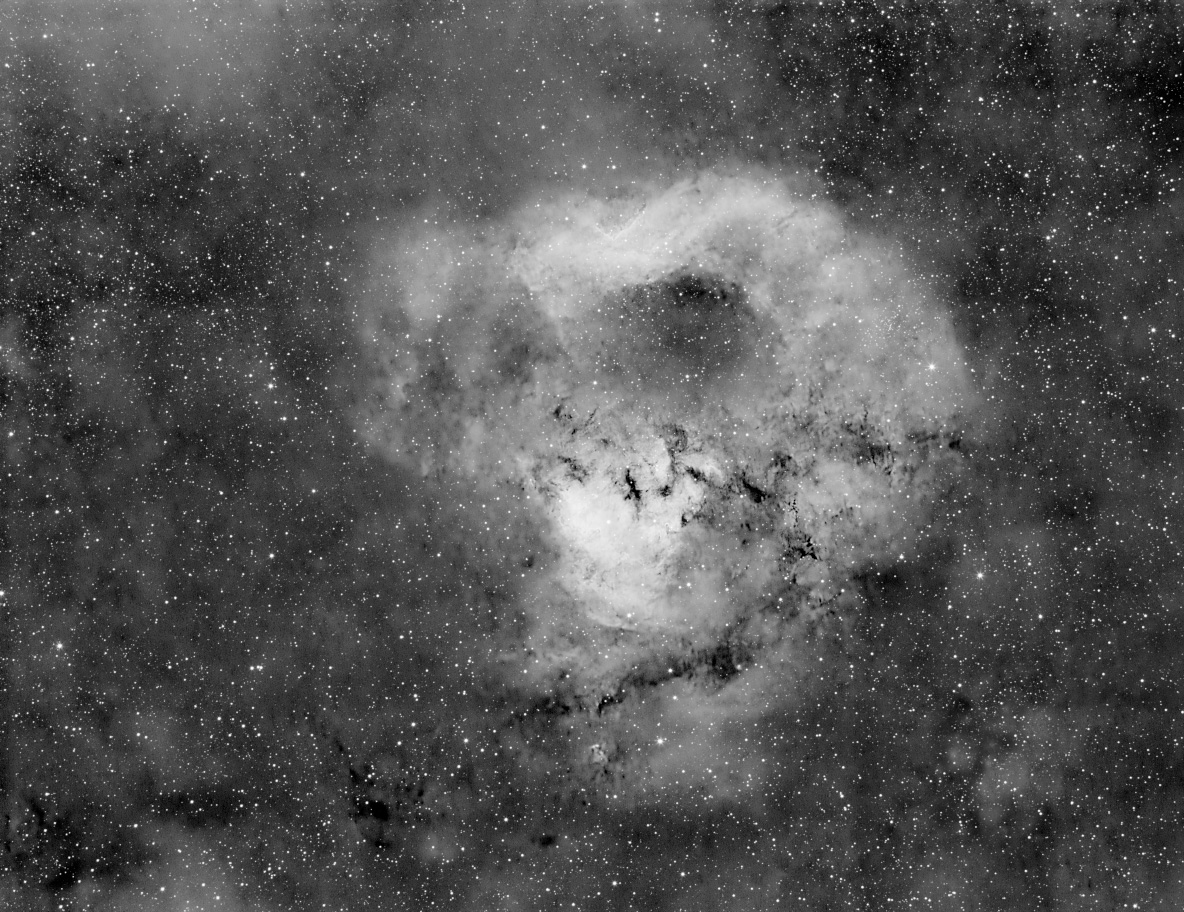
QSI 583 CCD
NGC4565 area
With NGC4562 and other galaxies
NGC4565 is located in the constellation Coma Berenices, close to the galactic pole. This means that even if we see NGC4565 nearly edge on, any inhabitants in NGC4565 would view the Milky way from the top. First recorded in 1785 by William Herschel, it is a prominent example of an edge-on spiral galaxy, probably similar to our own Milky Way. It is one of the brightest member galaxies of the Coma I Group and several other galaxies are visible in the area, in particular NGC4562 at the lower left.
NGC4565 exhibits a slightly warped and extended disk under deep optical surveys, likely due to ongoing interactions with neighboring satellite galaxies or other galaxies in the Coma I Group. If you look carefully on the central dust band you can see some evidence of the warping since the band is slightly tilted compared to the star population.
The distance to NGC4565 is somewhat uncertain but is in the range of about 50 million lightyears. If we assume that distance it would be about 230 000 lightyears from edge to edge i.e. , in the same size range as the Milky Way.
The image is an LRGB composite of 23 individual 600 sec exposures in luminance and 20 each in R, G and B for 300 seconds. Processing mostly in PixInsight and some in Photoshop. The color data was binned 3x3 in the camera and scaled up during processing to match the luminance.
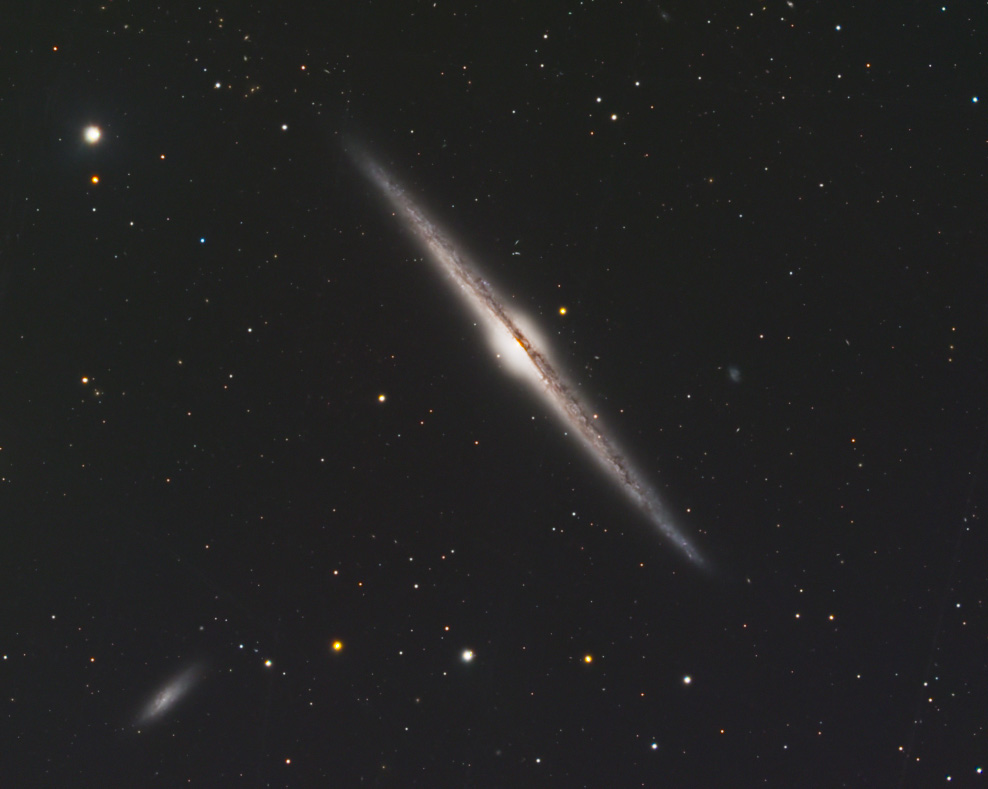
ASI 294 MC Pro wide angle
Comet C/2022 E3 (ZTF)
Long-period comet
C/2022 E3 (ZTF) is a long-period comet from the Oort cloud that was discovered by the Zwicky Transient Facility (ZTF) on 2 March 2022. The comet has a bright green glow around its nucleus, due to the effect of sunlight on diatomic carbon and cyanogen.
The comet's systematic designation starts with C to indicate that it is not a periodic comet, and "2022 E3" means that it was the third comet to be discovered in the first half of March 2022.
The comet nucleus was estimated to be about a kilometer in size, rotating every 8.7 hours. Its tails of dust and gas extended for millions of kilometers and, during January 2023, a third anti-tail was visible.
The comet reached its perihelion on 12 January 2023, at a distance of 1.11 AU (166 million km; 103 million mi), and the closest approach to Earth was on 1 February 2023, at a distance of 0.28 AU (42 million km; 26 million mi). The comet reached magnitude 5 and was visible with the naked eye under moonless dark skies.
This image is composed from 199 individual 60-sec exposures on January 27, 2023, 17.58 - 21.32 UT with the ASI 294 MC camera and a vintage 400mm Pentax 6x7 telephoto lens. The stars are shown as trails since the comet itself moved quite a lot during the exposure period. At the time, the comet was in Ursa Minor, not very far from the north celestial pole.
The field of view is about 2.5 x 1.5 degrees for the full size image.
An MPEG4 movie showing the comets path during the exposure period on January 27 is also available.
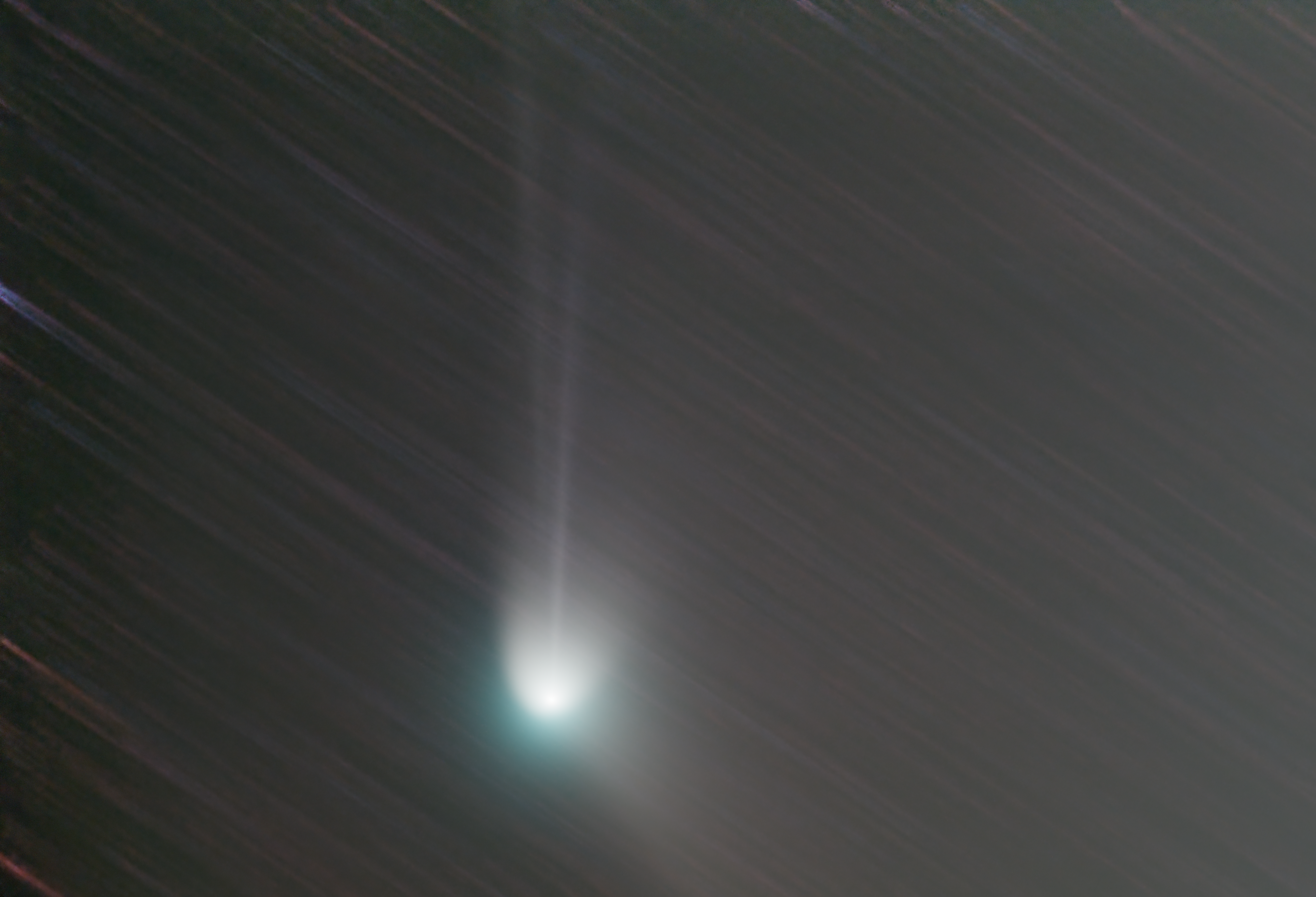
ASI 294 MC Pro wide angle
Rosette Nebula
NGC 2237 (Caldwell 49) and Sh2-280
The Rosette Nebula is embedded in the open star cluster NGC 2244 (Caldwell 50) and was discovered in 1690 by John Flamsteed. Sh2-280 is the smaller nebula to the right of Rosette. It is probably part of the same nebula complex. This is an average of 160 one-minute exposures with the ASI 294 color camera and a 200mm Canon telephoto lens.
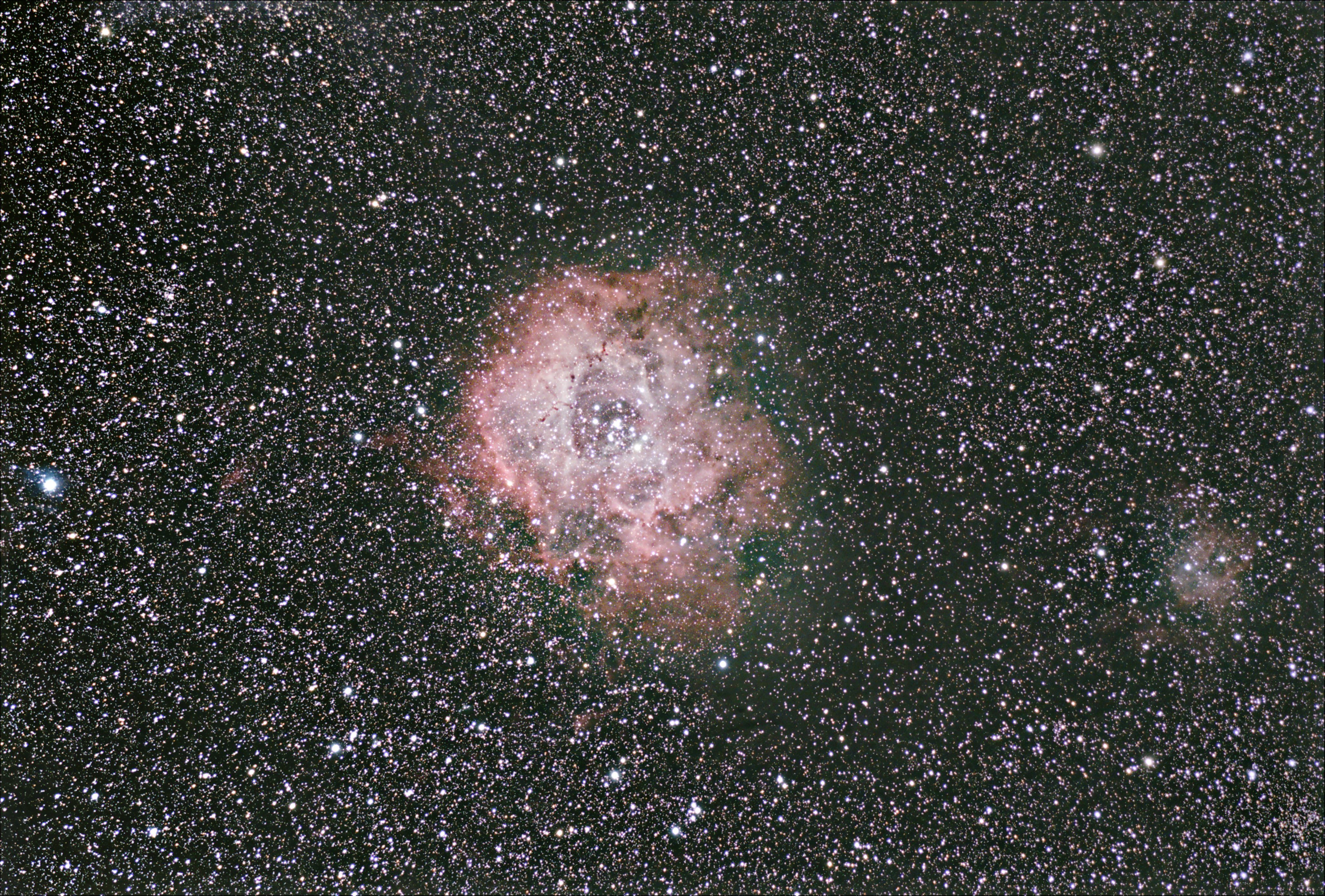
ASI 294 MC Pro wide angle
Orion Nebula area
Messier 42 and Barnard 33
The great Orion Nebula (M 42) is to the right and the dark Horsehead Nebula (Barnard 33) is visible in the lower left part of the image. The Horsehead is a dark nebula silhouetted against the red emission nebula IC 434 discovered by William Herschel in 1786. Many more nebulae part of the Orion Molecular Cloud Complex is visible in this field. I have another wide angle view showing this taken with a Canon 20Da DSLR and a deep red filter. This is an average of 197 one-minute exposures over two nights with the ASI 294 color camera and a 200mm Canon telephoto lens.
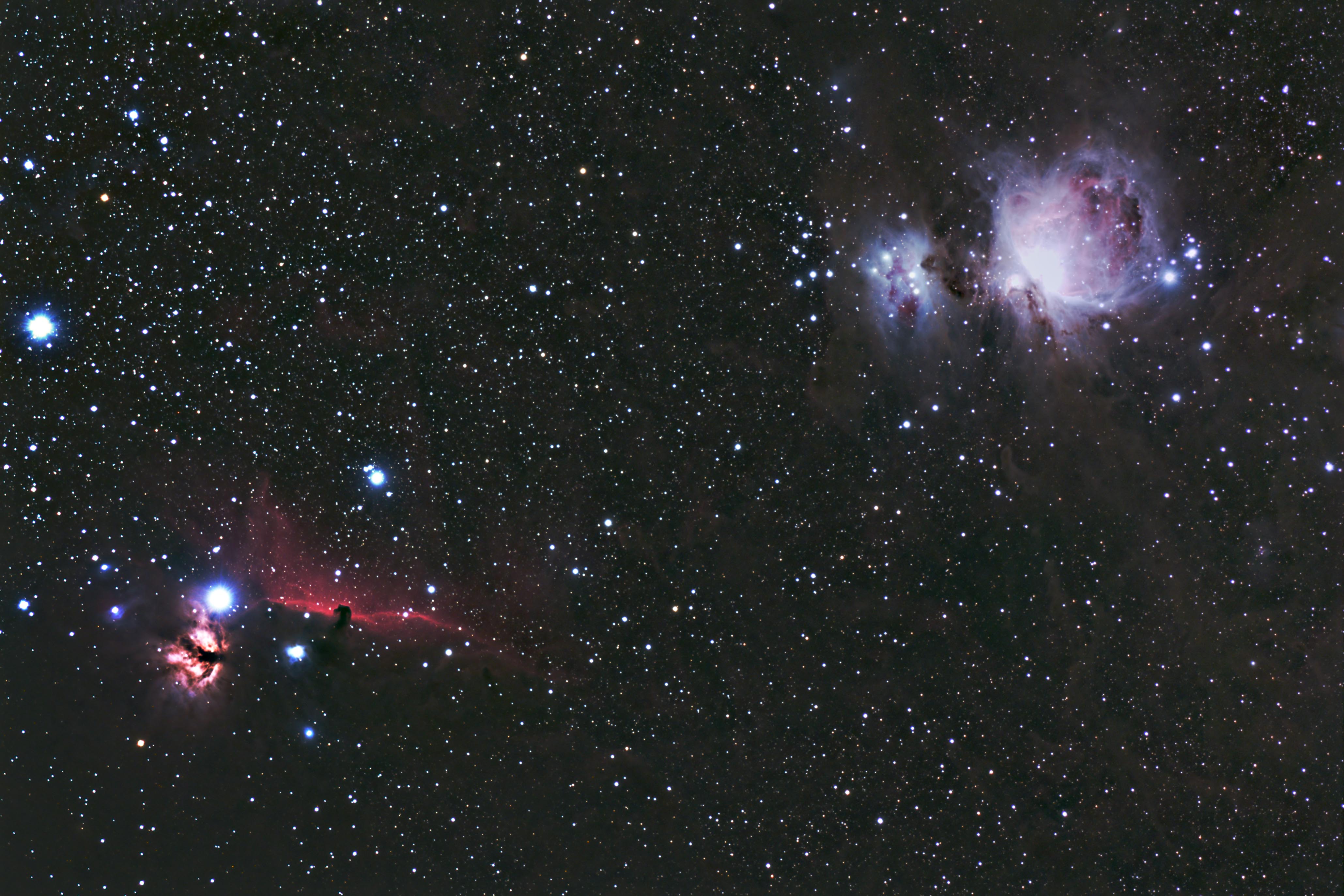
ASI 294 MC Pro wide angle
Great Andromeda Galaxy
Messier 31 with satellite galaxies
The Andromeda Galaxy and it's neighbor Triangulum Galaxy (Messier 33) are the most distant objects visible to the naked eye at 2.5 and 2.73 million light years from Earth respectively. Both are part of the local galaxy group. The Andromeda Galaxy is the closest major galaxy to the Milky Way and contains about one trillion stars, or roughly twice the number estimated for the Milky Way. You can also see two of the major satellite galaxies M32 and M110. On close inspection you will be able to identify many of the about 460 globular clusters assiciated with the Andromeda Galaxy. But the most massive cluster, Mayall II, is unfortunately outside of this field towards the lower left. This is an average of 159 one-minute exposures with the ASI 294 color camera and a 200mm Canon telephoto lens.

ASI 294 MC Pro wide angle
North America Nebula
NGC 7000 and IC 5070/5067
NGC 7000 lie 2590 light years away according to the latest data from the Gaia astrometry satellite. The nebula stretches about 90 light years from north to south. The North America Nebula was first seen by William Herschel in 1786. The smaller and fainter nebula to the right is the Pelican Nebula (IC 5070 and IC 5067). The North America Nebula and the Pelican nebula are both parts of the same nebular complex close to the star Deneb in the constellation Cygnus (The Swan). This is an average of 159 30-second exposures with the ASI 294 color camera and a 200mm Canon telephoto lens. Sky quality was very poor with a full moon high in the sky. But the good dynamic range and sensitivity of the ASI 294 camera at unity gain makes it possible to capture faint extended sources even under less than ideal circumstances.
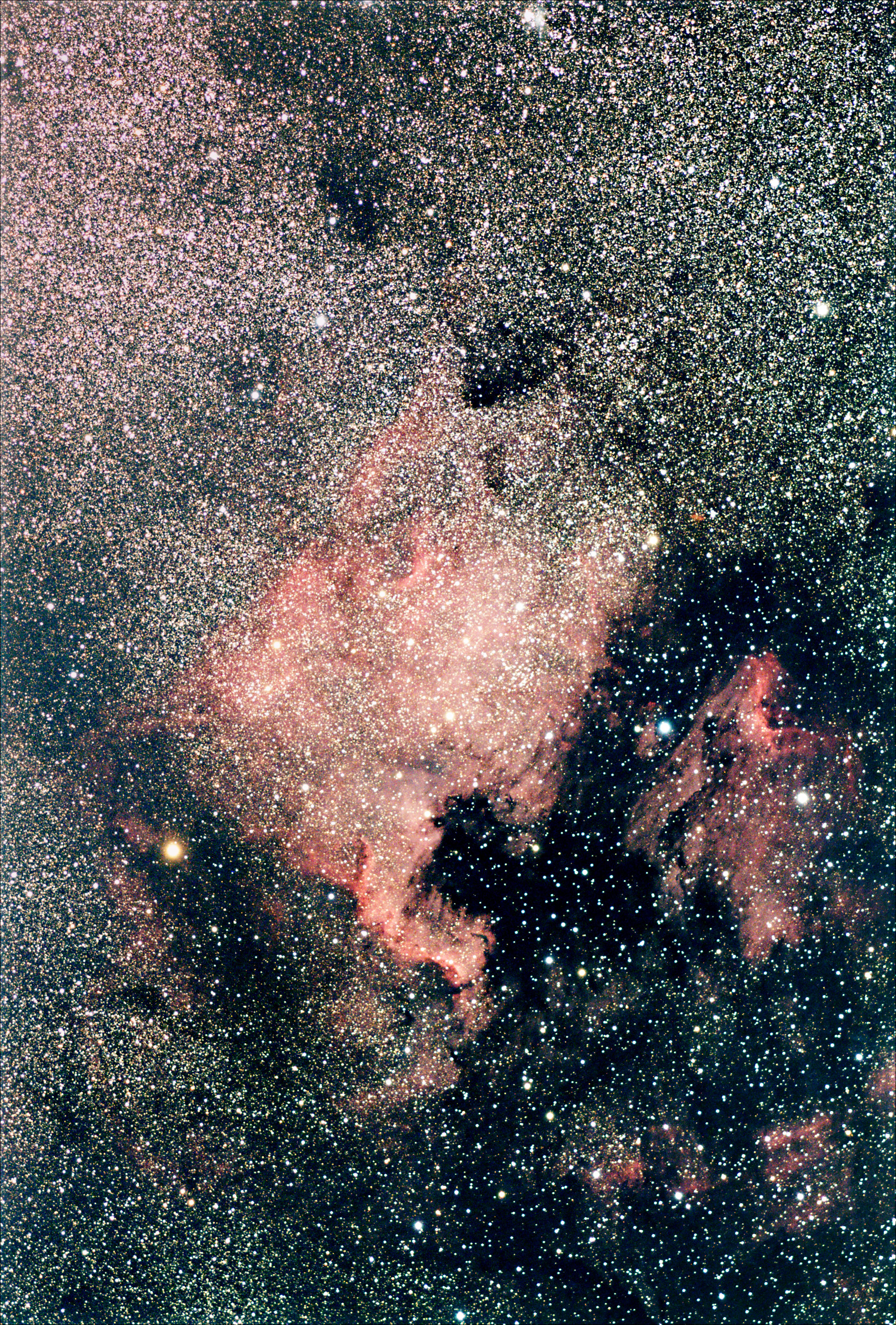
Canon 20Da DSLR
Moon colors
The real colors of the Moon
This is a composite of about 200 images taken with a Canon 20Da DSLR and a Celestron 11 with a f6.3 focal reducer. The color channels were averaged and color saturation heavily increased. But color balance was preserved so this is how we would perceive the Moon's colors if our eyes had enough color fidelity to make out the subtle colors of the Moon! Color differences in Mare areas are due to varying composition of the basalt flows, e.g Titanium content. Very low-Ti basalts (<2% wt) tend to be red while high-Ti basalts (>7% wt) tend to be blue.
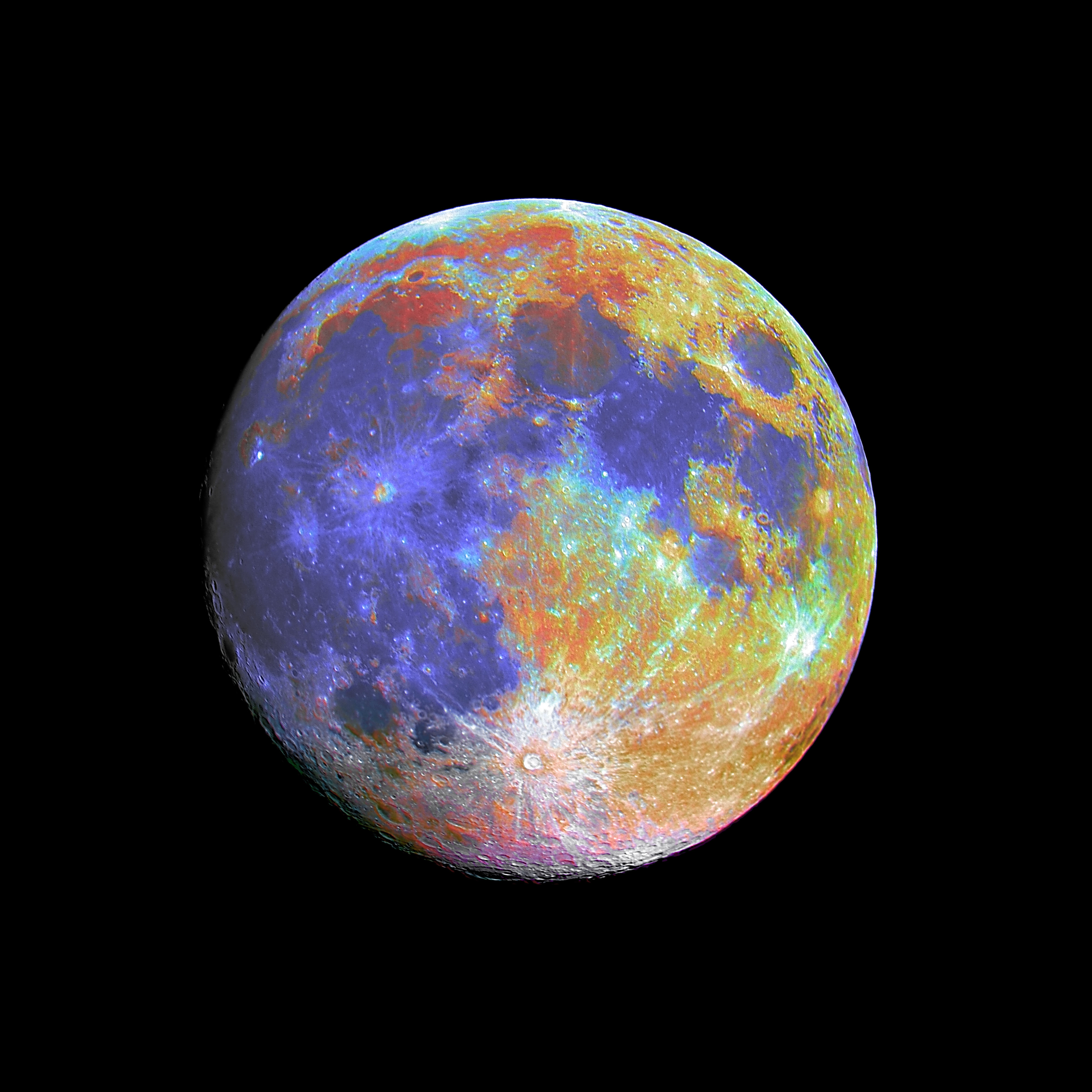
ASI 294 MC Pro wide angle
Virgo Galaxy Cluster
A view to over 1300 galaxies
The Virgo Cluster is a large cluster of galaxies whose center is 53.8 ± 0.3 million lightyears away in the constellation Virgo. Comprising approximately 1300 (and possibly up to 2000) member galaxies, the cluster forms the heart of the larger Virgo Supercluster, of which the Local Group (containing our Milky Way galaxy) is a member. It is estimated that the Virgo Cluster's mass is 1.2×1015 solar masses out to 8 degrees of the cluster's center or a radius of about 2.2 Mpc. Many of the brighter galaxies in this cluster, including the giant elliptical galaxy Messier 87, were discovered in the late 1770s and early 1780s and subsequently included in Charles Messier's catalogue of non-cometary fuzzy objects. Described by Messier as nebulae without stars, their true nature was not recognized until the 1920s. See below for an annotated version of the image.
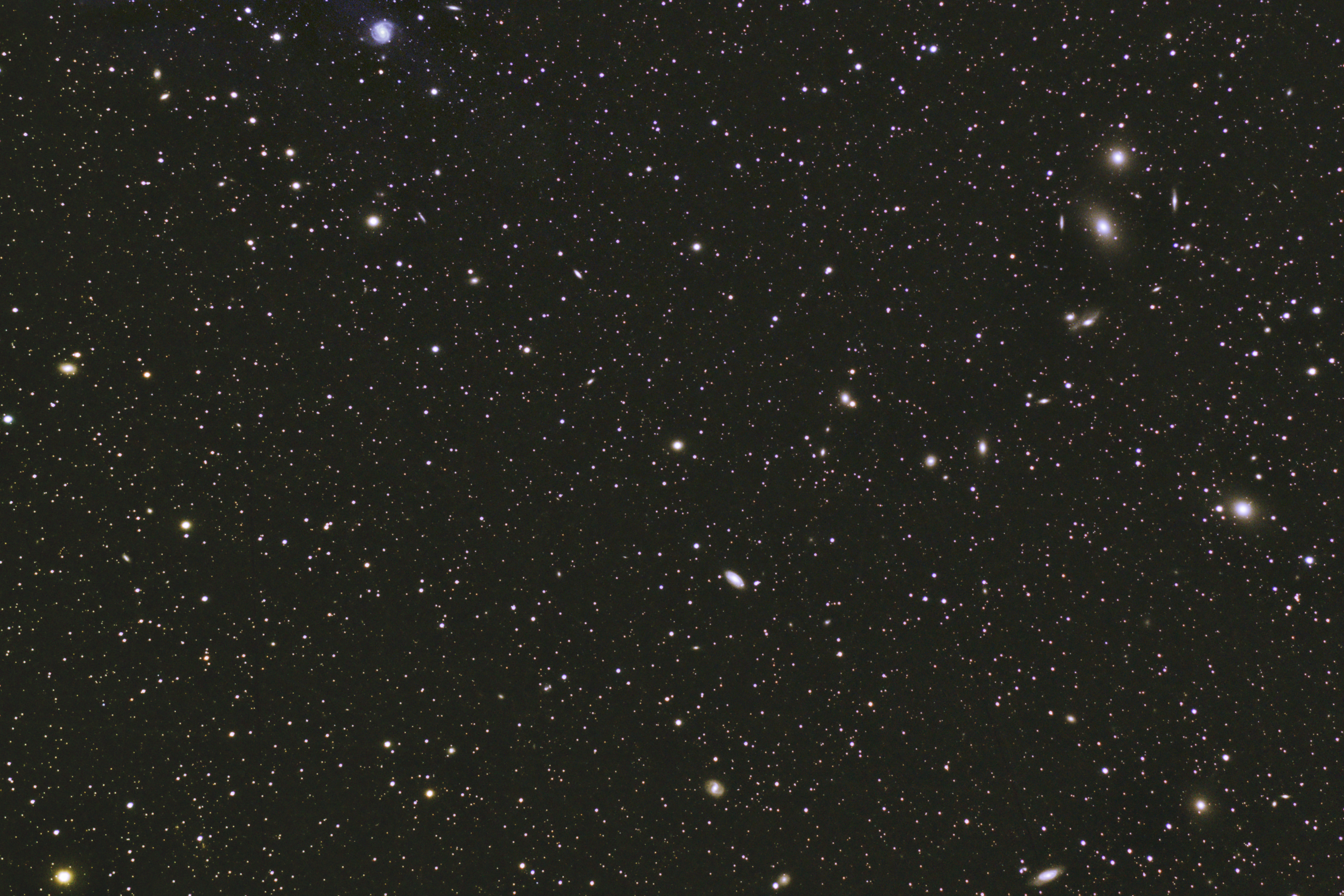
ASI 294 MC Pro wide angle
Virgo Galaxy Cluster
Annotated version
This is an annotated version of the image above where some of the larger galaxies are marked. In addition, there are a lot of smaller ones not marked here but you may spot some in the full size image.
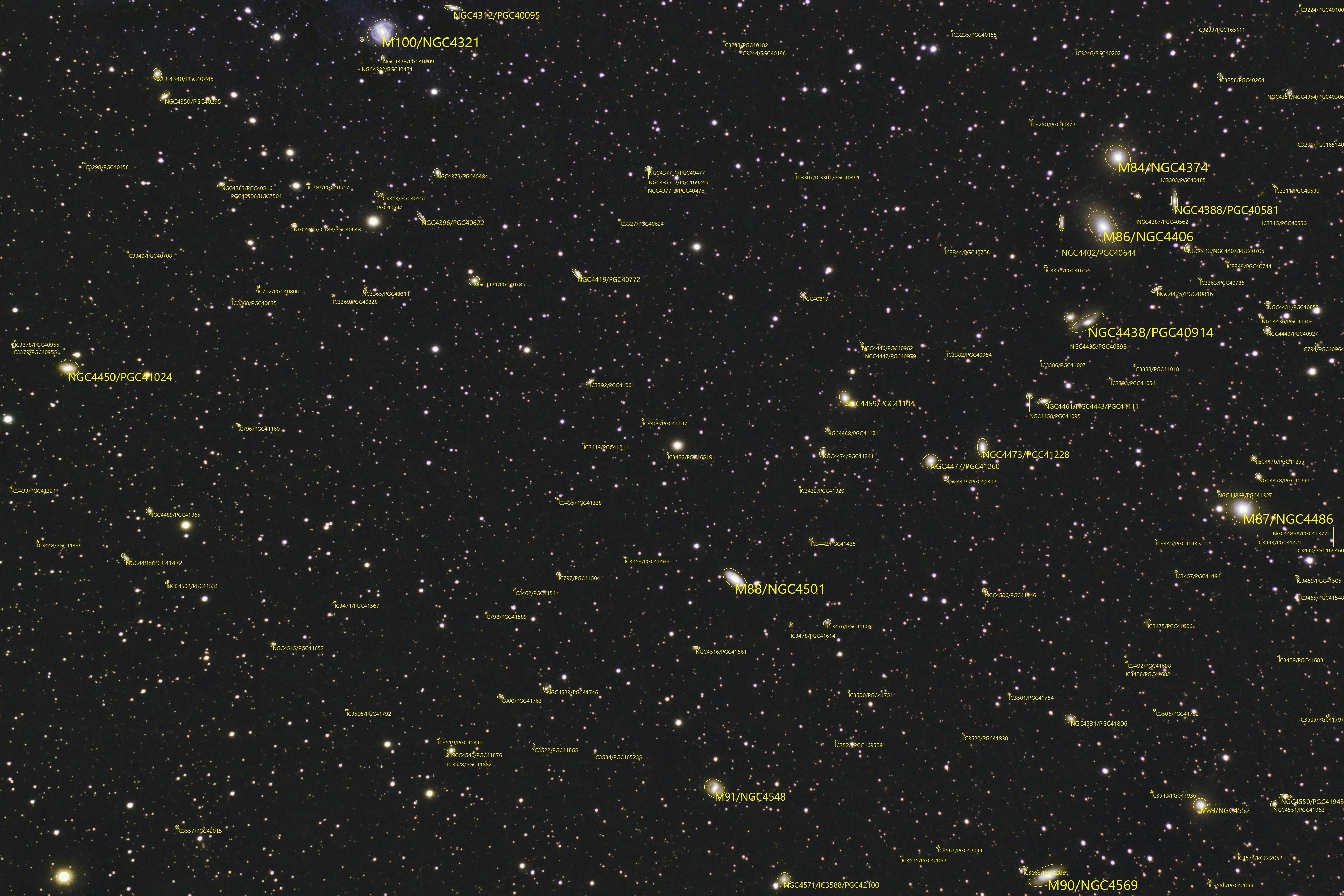
QSI 583 CCD mosaic
IC410 - The Tadpoles Nebula
A stellar nursery
IC410 is a dusty emission nebula located in the constellation of Auriga at about 12.000 ly from Earth. It is part of a larger star forming region that also contains the Flaming Star Nebula. The gas structures in this picture are lit by the radiation from the open star cluster NGC1893 that lies in the center of the nebula. This star cluster is about 4 million years old, but in astronomical terms it is still very young, with hot, massive stars. At the top-right of the star cluster, near the center of the image, two more dense structures are visible. These are similar to the famous Pillar of Creation and they are composed of dust and gas leftover from the formation of the star cluster and are very likely to give birth to more stars in the future. As can be seen in the picture, these structures point away from the center of the nebula. This is because of the stellar winds and radiation pressure from the stars in NGC 1893. Due to these structure's shape, the nebula is also called the Tadpoles Nebula. This image is a composite of 12 frames taken with a QSI 583 CCD camera and a Celestron 11 telescope operating at a focal length of 2109 mm. Each frame include a number of separate images with luminance, red, green and blue filters. In total 385 images with a combined exposure time of 30 h 36 m were required for the 12 frames which were stitched together for this image. Image processing with PixInsight.
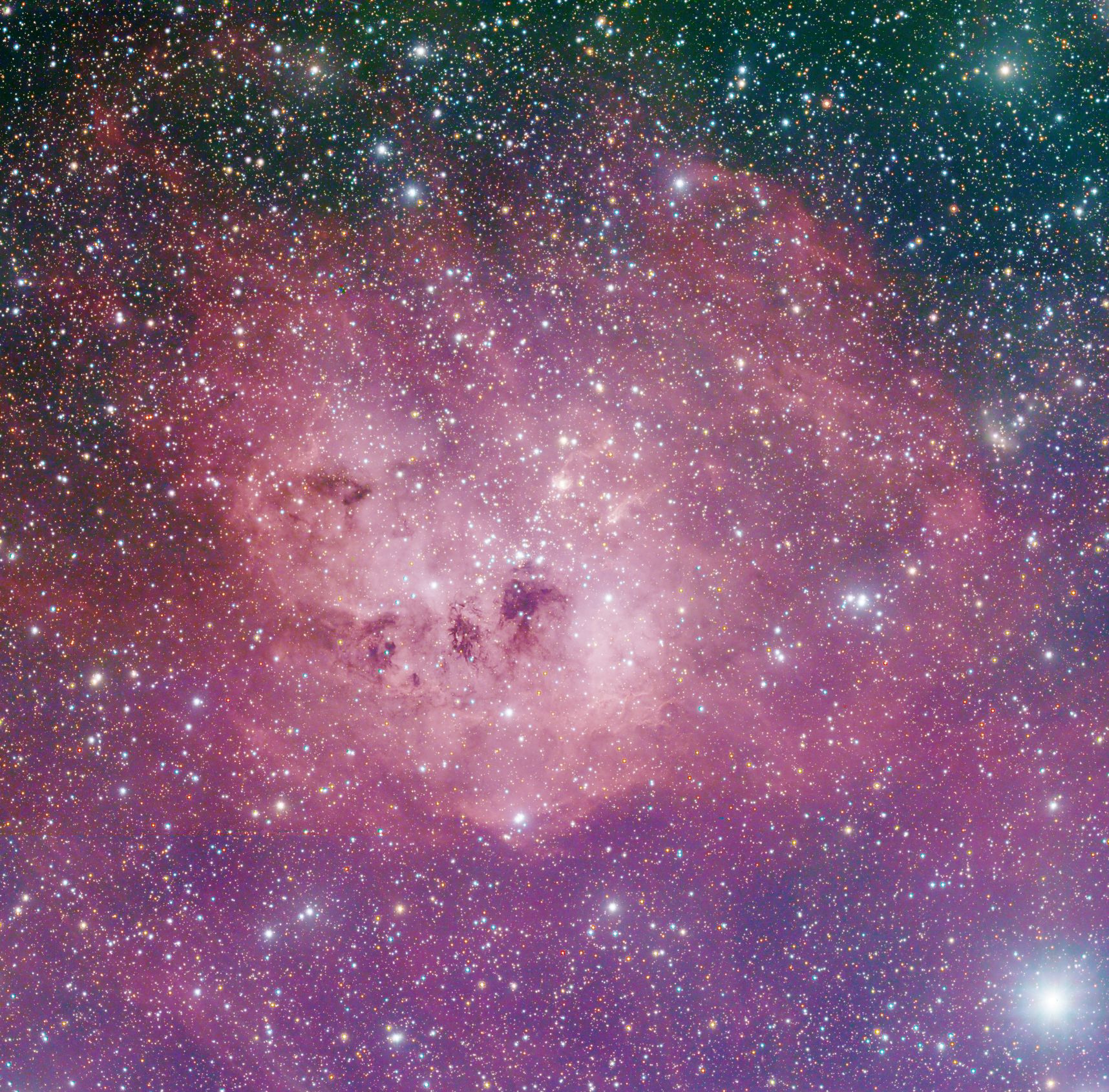
QSI 583 CCD mosaic
IC410 - Tadpoles Detail
A stellar nursery
A detail view of the "tadpoles" near the center of IC410.
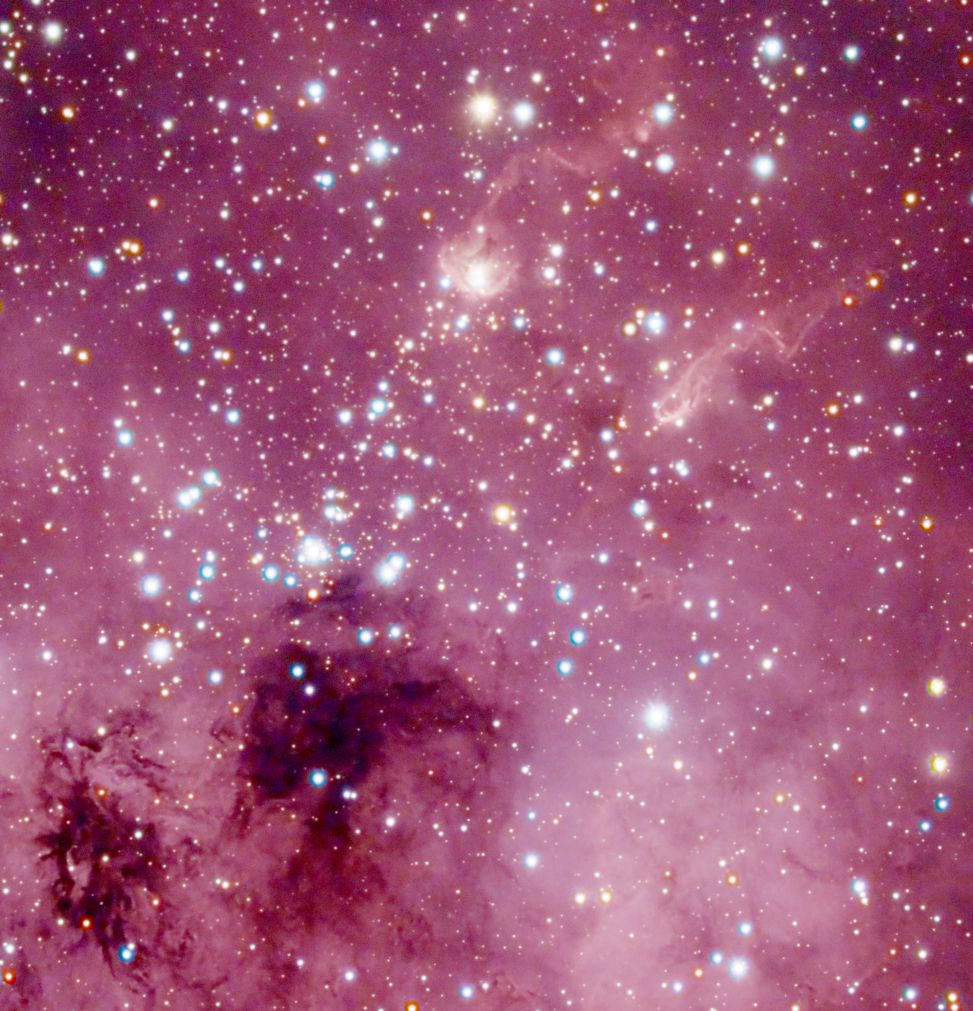
ASI 294 MC Pro wide angle mosaic
Veil nebula
A supernova remnant
The Veil Nebula is a cloud of heated and ionized gas and dust in the constellation Cygnus. It was discovered on 5 September 1784 by William Herschel. It constitutes the visible portions of the Cygnus Loop, a supernova remnant, many portions of which have acquired their own individual names and catalogue identifiers. The brighter segments of the nebula have the New General Catalogue designations NGC 6960, 6974, 6979, 6992, and 6995. The source supernova was a star 20 times more massive than the Sun which exploded near the center of this image between 10,000 and 20,000 years ago. At the time of explosion, the supernova would have appeared brighter than Venus in the sky, and visible in daytime. The remnants have since expanded to cover an area of the sky roughly 3 degrees in diameter (about 6 times the diameter, and 36 times the area, of the full Moon). While previous distance estimates have ranged from 1200 to 5800 light-years, a recent determination of 2400 light-years is based on direct astrometric measurements. (The distance estimates affect also the estimates of size and age.) This image is a composite of 4 mosaic frames taken with a ASI 294 MC pro color camera and a Pentax 6x7 400 mm lens stopped down to f5.2. In total 341 120 second exposures with a combined exposure time of 11 h 22 m were required for the 4 frames which were stitched together for this image. Image processing with PixInsight. See below for zoomed in views of selected areas.
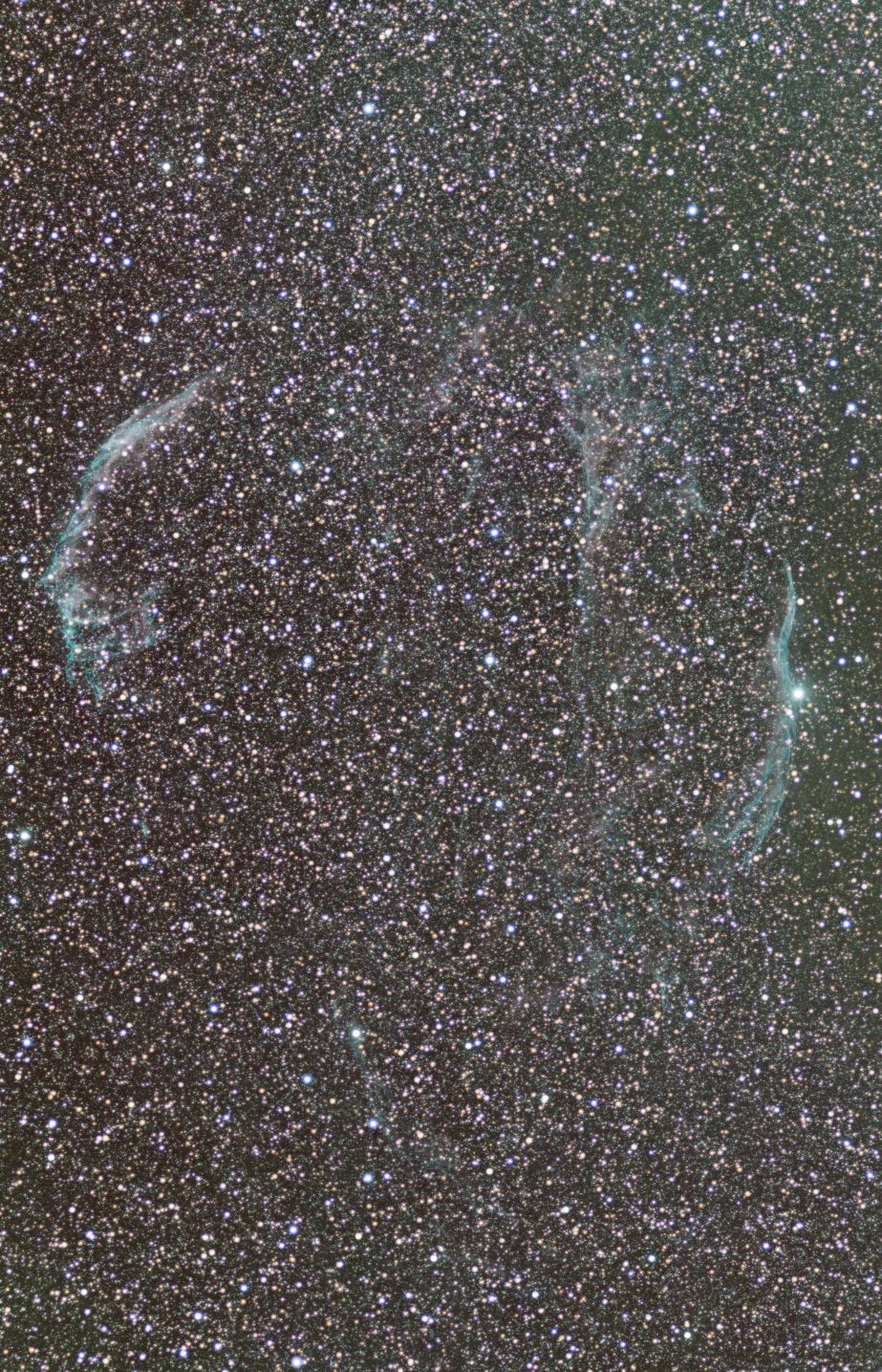
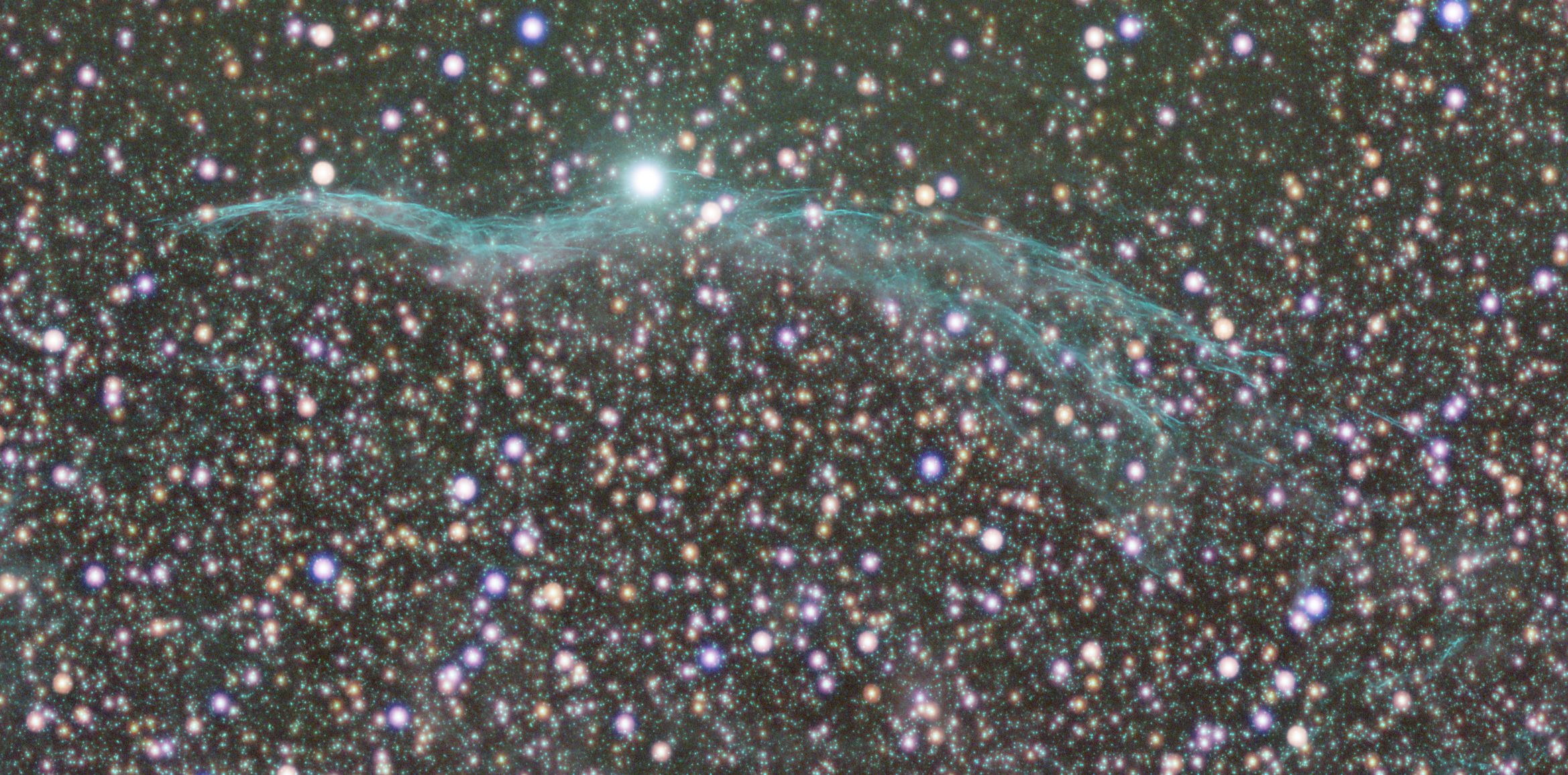
ASI 294 MC Pro wide angle mosaic
Western Veil nebula
Supernova remnant detail
This is a detail of the western part of the Veil nebula shown above. The Western Veil (also known as Caldwell 34), consisting of NGC 6960 (the "Witch's Broom", Lacework Nebula, "Filamentary Nebula") near the bright foreground star 52 Cygni at center. Image processing with PixInsight.
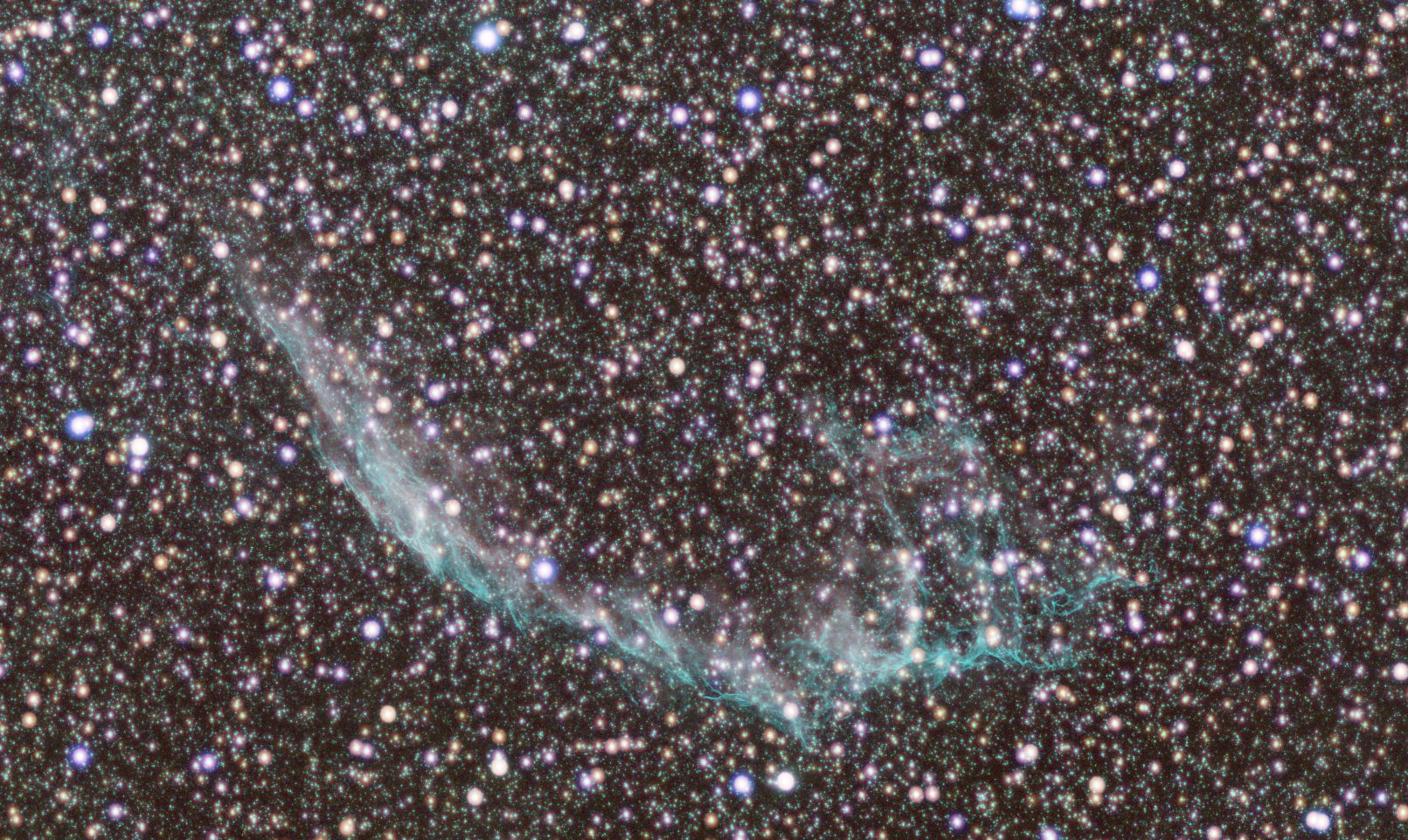
ASI 294 MC Pro wide angle mosaic
Eastern Veil nebula
Supernova remnant detail
This is a detail of the east part of the Veil nebula shown above. The Eastern Veil (also known as Caldwell 33), whose brightest area is NGC 6992, trailing off farther south into NGC 6995 (together with NGC 6992 also known as "Network Nebula") and IC 1340. Image processing with PixInsight.
ASI 294 MC Pro wide angle mosaic
Pickering's triangle in Veil nebula
Supernova remnant detail
Pickering's Triangle (or Pickering's Triangular Wisp), brightest at the north central edge of the loop, but visible in photographs continuing toward the central area of the loop. Image processing with PixInsight.
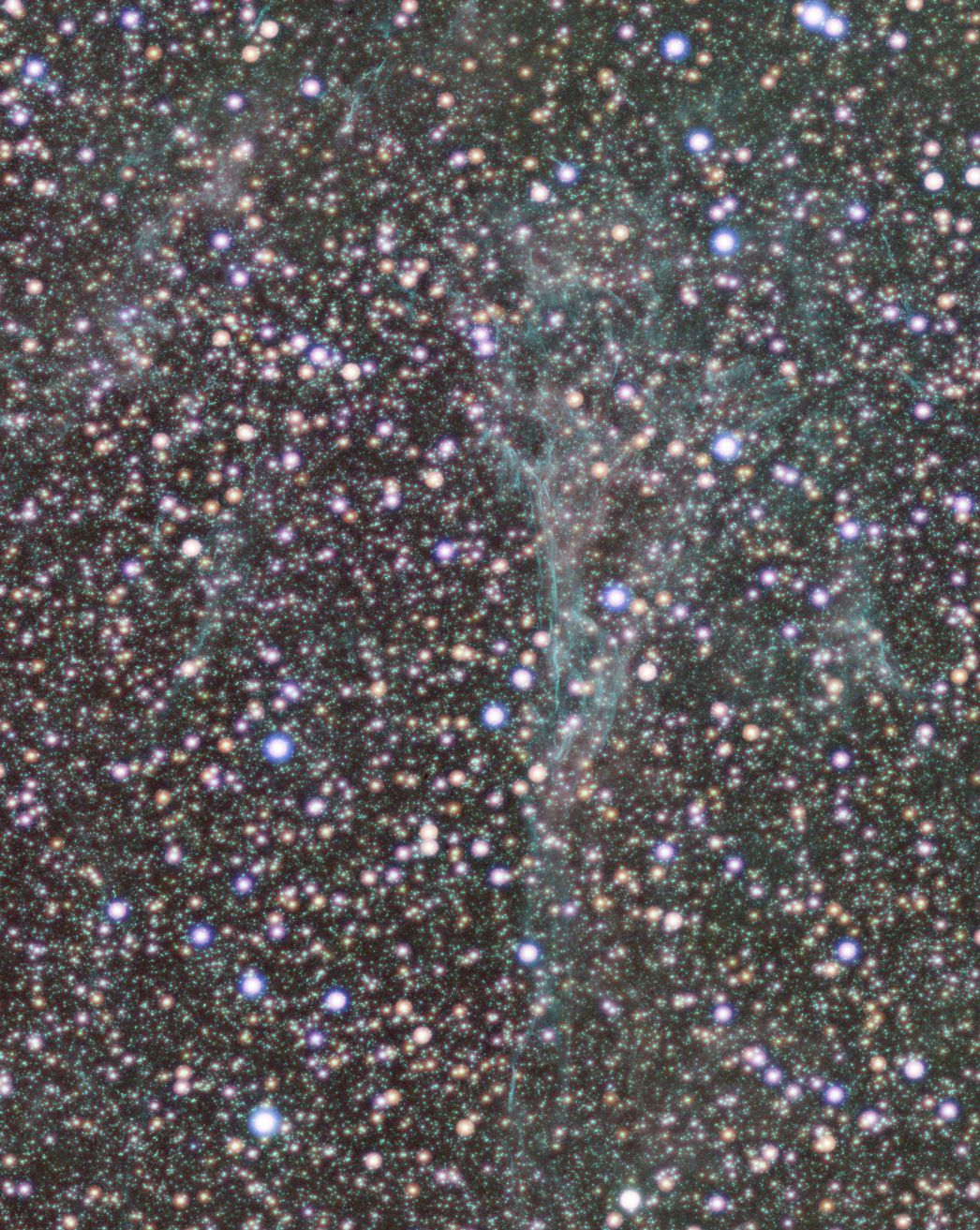
ASI 294 MC Pro wide angle
NGC7822
Star forming complex
NGC 7822 is a young star forming complex in the constellation of Cepheus. The complex encompasses the emission region designated Sharpless 171, and the young cluster of stars named Berkeley 59. The complex is believed to be some 2600-3600 light years distant with the younger components aged no more than a few million years. The complex also includes one of the hottest stars discovered within 3600 ly of the Sun, namely BD+66 1673, which is an eclipsing binary system consisting of a star that exhibits a surface temperature of nearly 45,000 K and a luminosity about 100,000 times that of the Sun. The star, marked with a circle in the image, is one of the primary sources illuminating the nebula and shaping the complex's famed pillars of creation-type formations, a.k.a. the elephant trunks.
Fun fact: What would be the surface temperature of the Earth if BD+66 1673 were to replace the Sun? Such calculations are very hard to make accurately since the result depends on a lot of factors. But it would for sure be very hot, roasted in fact. Surface temperature would be in the region of 4700 K or about 4400 C, give or take a couple of hundred degrees! This would turn the Earths' surface into a global lava ocean since it's in the same region as the temperature of the lover mantle where it comes into contact with the Earth's core!
The image is an average of of 200 individual 120 sec exposures for a total exposure time of 6 hours, 40 minutes. Image processing with PixInsight.
